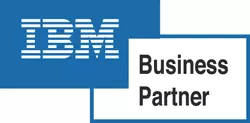October 2006
- What are the "big picture" symptoms of system erosion?

- Ruling out diagnoses other than system erosion...
- System erosion – is it already upon you?
- Sometimes, you need to see both the forest and the trees: "Detail" symptoms of system erosion
- What are the causes of system erosion?
- What to do about system erosion
- Results and benefits of addressing system erosion – and the Big Payoff, System Predictability.
- Bringing it all together...
This is the second of a two-part article on System Erosion. In the first part (System Erosion – Part 1: Definitions, Concepts, and Analogies), we laid the groundwork for defining, understanding, and discussing System Erosion. One key definition was that of System as People, Process, and Technology – Together (PPT-T) – where:
- People perform activities that are part of Process, and also use the Technology enabling the Process.
- Process is the glue that links People with Technology.
- Technology includes the hardware and software (computer programs) that work together to gather, process, and store information.
We also saw that:
- Insights into a system as a whole are gained by understanding the linkages and interactions among the underlying parts.
- These linkages and interactions may be hard to see, because the initial cause and ultimate effects are separated by distance or time.
- Because of these linkages and interactions, even small causes can propagate or accumulate to become large effects throughout the whole system.
System can refer to small or large systems – the concepts apply equally, regardless of the number of people (a workgroup, a department, or the entire company), nature of the process, or complexity of the technology. The remainder of this article presumes a large system, one that crosses, controls, and coordinates major functions of a business, such as an operations system, a materials requirements planning (MRP) system, a financial suite, or an enterprise resource planning (ERP) system.
What are the "big picture" symptoms of system erosion?
Some of the "big picture" symptoms of systems erosion can include:
- The system appears to lack relevance or credibility.
- The company is losing customers, or losing market share.
- Sales reps are experiencing longer sales lead time.
- Gross profit margins are declining and no one can really answer "why."
- People spend more time looking backward than looking forward.
Systems investments – and the technology usage and process improvements that accompany these – are frequently cost-justified on their ability to help improve future results, not to better report past results. When one senses a shift from planning, control, and other proactive activities to reporting, responding, and other reactive activities – as indicated by these symptoms – one needs to start asking more questions.
Ruling out diagnoses other than system erosion...
The symptoms listed in the previous section can be caused by other sources – so, the first step is to rule out causes other than system erosion. Some possible other causes include:
- Loss of a key employee, customer, product, or competitive position.
- Demands of a major customer that cannot be ignored without risking loss of business.
- Industry changes caused by legislation, national or world events, or similar actions affecting all companies in an industry.
One observation – if you can use the existing system (meaning, the PPT-T) to definitively rule out these other causes, then the system may be in the early stages of System Erosion. At such a stage, it is easier to get things back on track quickly, while taking less effort to do so.
System erosion – is it already upon you?
You may already be experiencing system erosion and not even know it. For many companies, new systems were implemented – or existing systems upgraded – in 1998 or 1999 to address Year 2000 concerns. These implementations or upgrades are now 7 to 8 years old, and system issues are likely beginning – or continuing – as linkages have dissolved.
Sometimes, you need to see both the forest and the trees: "Detail" symptoms of system erosion
It is possible to be too close to a situation to notice something. Even if you deliberately devote the time and effort to step back to see both the details and the big picture, having an objective outside opinion is generally beneficial.
Positively diagnosing system erosion requires looking at the details. Here are some things to look for:
- Numerous manual workarounds – Are people using the process or technology as originally designed, or have they devised workarounds? Worse yet, are they both using the system and maintaining manual workarounds?
- User frustration – Are key users of the process and technology frustrated, and perhaps lack knowledge on how the system is meant to function?
- User turnover – Has personnel turnover resulted in poor knowledge transfer, especially among experienced users?
- Data is not accurate – Do people question the data accuracy?
- Data is available, but not being used – Is accurate data available, but people have forgotten how to access it, or it was never available in a user-friendly format?
These symptoms are actually by-products of poorly performing activities, and will affect both how resources are consumed and results are produced. As such, these symptoms have quantifiable effects on the cost, cycle time, and quality of activities and their results.
In summary, symptoms of system erosion reveal themselves in the details. Fortunately, a diagnosis of "system erosion" is not terminal, because its causes can be understood and addressed.
What are the causes of system erosion?
Just as a body in motion tends to keep moving unless it is acted upon by a force, the system (PPT-T) in motion also keeps moving until linkages are broken. Erosion is gradual – many small links broken over time. Linkages are broken by many causes, including:
- Personnel Changes – This takes several forms, including:
- Losing a User – Despite best efforts at transition, training, and documentation, you will always lose the person's knowledge of the process and technology.
- Losing a Champion or Power-User – A champion is someone who sponsored or advocated for the initial system. A power-user is someone who intimately knows the process and technology of the system. Not only do you lose this person's knowledge – you are also losing their passion for the system and their vision of how everything fits together. Losing such a person has greater impact than losing a typical user.
- Gaining a New User – While there is an inevitable loss of knowledge between the existing and new users, the new user will also bring different knowledge and assumptions about how PPT-T should interact. Different experiences brought to the job can unintentionally erode the system.
- Gaining a New Champion or Power-User – This person not only brings different knowledge and assumptions, but also has the ability to influence others about how the PPT-T should interact.
- Business Changes – Environmental, competitive, economic, and similar factors can change the business landscape and require relinking the web of PPT-T relationships.
- Memory Retention – People tend to forget things as time passes. The phrase "use it or lose it" is on point here.
- People will "use it" and retain more knowledge if things are simple, frequent, urgent (that is, time-sensitive), and important.
- Because peoples' memories are imperfect, improve memory retention and system robustness by making complex tasks simple, designing infrequent tasks as a special case of frequent tasks, streamlining non-urgent tasks just as much as the urgent ones, and minimizing or eliminating the unimportant tasks.
- System Procrastination – Remember that post-implementation punchlist of "loose ends" and "To Do's" that never got completed? That punchlist likely would have helped strengthen the PPT-T linkages. As such, procrastination contributes to erosion.
- System Stagnation – This occurs when you have an application, but have never used it to its full capabilities. For example, mobile devices are typically used initially only for e-mail, but failing to progress beyond this point fails to take advantage of the system's full potential.
What to do about system erosion
A system is a complex thing – full of interconnected links among PPT-T. Because PPT-T is a corporate asset, it needs to be managed like any other asset. After the initial investment, ongoing investments are needed to maintain the usefulness of the asset. Techniques to prevent system erosion can include ongoing training, continuous process improvement, process control measures, and routine review of performance standards. These same techniques can, when combined with the learning curve effect and a stable workforce, not only prevent erosion but even continue to improve the system after its launch.
Addressing system erosion requires some investment to relink PPT-T. Some successful techniques that we have seen and recommend include:
- Upgrading an existing application – While this should be a routine action, companies – including many who should know better – have highly customized an application, so that an upgrade is a big deal. When customizations are extensive, upgrading and re-implementing customizations can be almost as expensive as selecting and implementing a new application. We have helped clients wrestle with this trade-off, as well as help them define and manage customizations in ways that do not interfere with the base application.
- Selecting and implementing a new application – This would be appropriate if new software better meets your needs than existing software, or extensive customizations have become so cumbersome to maintain or use that the only option is new software. We have helped our clients do this on many occasions, ranging from a quick system screening to a full system selection, implementation, and customization.
- Integrating "best of breed" applications – Perhaps your existing applications consist of two or more "best of breed" applications – for example, one for shop floor and distribution operations, and a second for the financial applications. These applications are "just right" for your use, but were never integrated. As such, duplicate data entry occurs, causing lost productivity, inconsistent information, and the like. Integrating these applications allows the benefits of an ERP system without the wholesale commitment to a single application vendor. On several occasions, we have helped clients define and implement an application which integrates multiple source applications.
- Extending an existing application – If the applications still meet your needs, they can be extended to new uses – such as mobile devices – fairly easily. We have extended applications to support mobile platforms, and to provide additional functionality.
One technique that we also see is conforming processes to the existing technology. This technique should be used with care. While this is typically a lower-cost investment than other options, your employees may find the resulting processes uncomfortable, because they emphasize the needs of technology over those of people, resulting in a poor fit of PPT-T.
Results and benefits of addressing system erosion – and the Big Payoff, System Predictability.
The obvious results and benefits are that the symptoms – and the pains – of system erosion are halted and reversed.
The main benefit that I see, however, is not always obvious or readily apparent – the benefit of System Predictability. As processes become more disciplined, and people are linked more tightly with the technology – specifically, an application – through process, then process predictability is improved. Lower process variation leads to higher process consistency and quality – and greater predictability.
While you, as an executive or manager, may be unable to control the results of your activities, you can control the quantity and quality of the activities. More consistent performance of activities leads to more predictable consumption of resources, and more predictable production of results. Improved consistency leads to improved predictability.
This was wonderfully illustrated several years ago, when a client and I visited the Financial Planning & Analysis Manager of a large package delivery company – this company focused heavily on methods and standards in their operations processes. The Planning & Analysis group of this company could – given a particular level of actual activities – predict their financial results with over 99.5% accuracy! This high predictability enabled this company to be very forward-looking – they could predict their quarterly results with high accuracy because of the repeatability of process outcomes, and thus spent little time analyzing historical results because they were in line with forecasts.
Bringing it all together...
This article has dealt with many aspects of system erosion – defining and illustrating this term, identifying underlying causes, and suggesting some techniques to address it. Along the way, we've seen that a typical system has much complexity, that diagnosing system erosion requires some detailed work, and that addressing this issue entails time and effort. To get a good start, an outside viewpoint can be invaluable.
Why should you, as an executive or manager, look at "system erosion" at all? Imagine your business being forward-looking. Imagine fewer surprises in your business. Imagine improved morale. Imagine better customer relations. Imagine more consistent financial performance. System Predictability is the key to this vision. Converting vision to reality is possible, once you are able to view your business as a complex system, understand the linkages and interactions in the system, know the effects of inputs to and outputs of the system, and manage your business with unprecedented accuracy – all by tapping into the power of People, Process, and Technology – Together.
Sincerely,
![]()
Todd L. Herman






